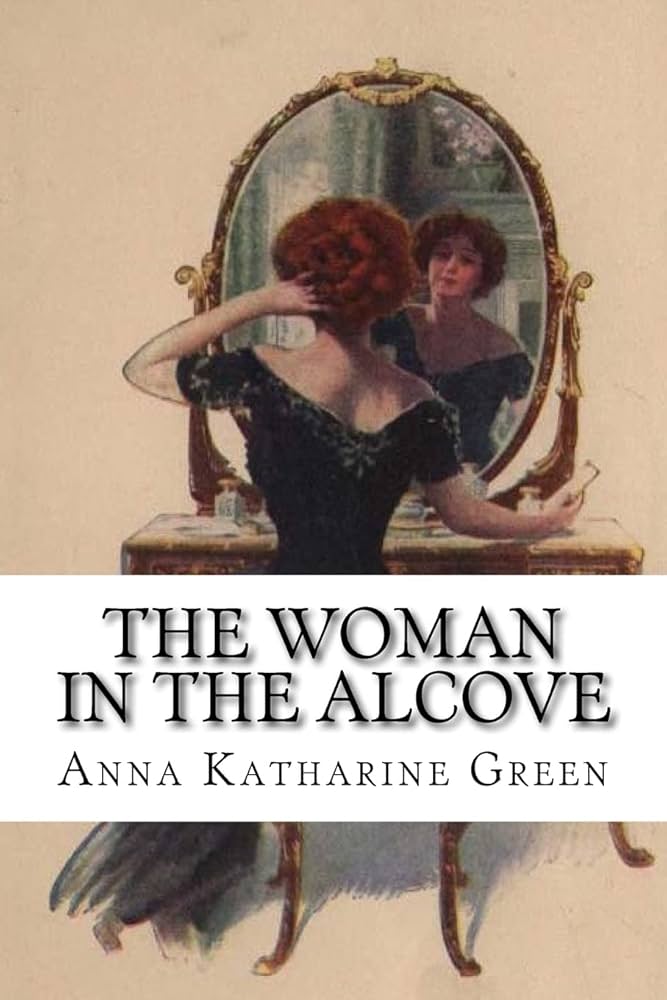Chapter VI — The woman in the Alcove
byChapter VI – The woman in the Alcove captures a moment when tension quietly tightens around the narrator. Though no verdict has been reached, Mr. Durand remains under suspicion, and she is forced into silence by her uncle’s stern instruction to avoid all contact with him. Yet silence does not erase her concern. Each day stretches longer as public whispers build, casting shadows over a man she cannot believe to be guilty. The narrator’s thoughts continually drift toward the events of that night—the bloodstained shirt, so jarringly inconsistent with the elegant and precise nature of the stiletto that took Mrs. Fairbrother’s life. The weapon’s unusual design, far removed from anything a refined gentleman might possess, becomes a detail too important to overlook. To her, these inconsistencies don’t speak of guilt, but of a plot constructed to appear simple while hiding deeper truths.
Alongside this, the discovery of broken coffee-cups and a strange message clasped in the victim’s hand presents a troubling scenario. These elements feel staged, too cleanly arranged to reflect a crime of passion. The message, particularly, holds weight—it seems to be a warning, hastily written, as if someone feared for her life but lacked time or clarity to escape her fate. The narrator ponders the timeline. If the message was meant for someone, was it sent in time? And what did it mean that it remained unread or unheeded until after death? While others focus on Mr. Durand’s seemingly damning evidence, she shifts her focus toward what doesn’t add up. Her intuition, sharpened by emotional investment, picks up on moments too easily brushed aside—like the eerily convenient timing of his presence and the mismatch between the blood on his clothes and the injuries described.
The diamond, central to both the murder and speculation, introduces another layer of complexity. Initially hailed as a remarkable stone, it is later determined to be a counterfeit. That revelation ripples through the investigation, raising questions no one seems able to answer definitively. When was the switch made? Who had the opportunity, motive, and access to such a prized possession? Most assume it occurred close to the moment of the crime, but the narrator disagrees. She believes it was done long before the murder—perhaps by someone who counted on the public’s assumption that murder and theft happened simultaneously. This belief isolates her. But it also gives her a clarity others lack. She sees a narrative forming beneath the surface, a tale of manipulation and illusion designed to trap not just the guilty, but the innocent as well.
Hope is pinned on Mr. Fairbrother, the one man who could clear up the diamond’s origins and possibly verify its realness. His testimony might shift the trajectory of the investigation, offering factual clarity instead of circumstantial guessing. However, reports of his illness bring uncertainty. Will he recover in time to speak? And if he does, what will he remember, and what might he choose to reveal? The narrator, despite her limited role, recognizes the weight of what hinges on this man’s account. It isn’t just about the stone anymore—it’s about the nature of motive, intent, and how cleverly someone can conceal malice behind social stature and silence. Her own conclusions feel fragile, yet necessary. She holds onto them as one would a lifeline in a storm.
Even as she remains locked out of the legal process, the narrator’s resolve doesn’t falter. Each moment spent waiting deepens her conviction, not just in Mr. Durand’s innocence, but in the failure of surface-level observations. Justice, she realizes, is often clouded by fear, reputation, and hasty assumptions. And though her voice is not officially heard, she prepares herself mentally to step in, to share what she knows or suspects, no matter the risk. Her position is not one of power, but of clarity sharpened by love. The tension in this chapter lies not in action, but in reflection—the slow realization that even in silence, resistance can grow, and truth may yet find a way through.


